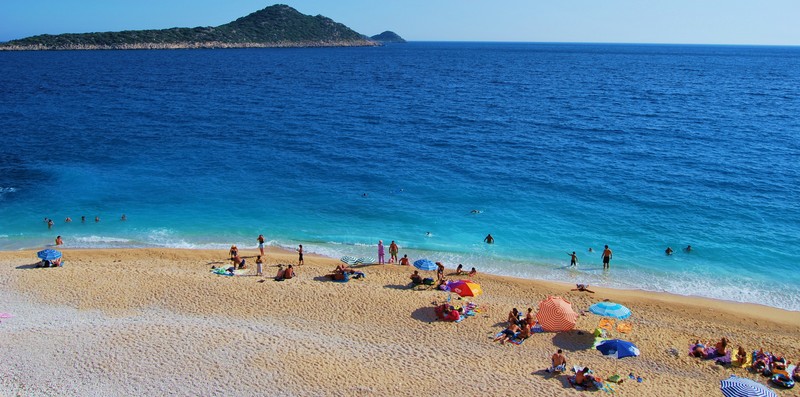Local Area
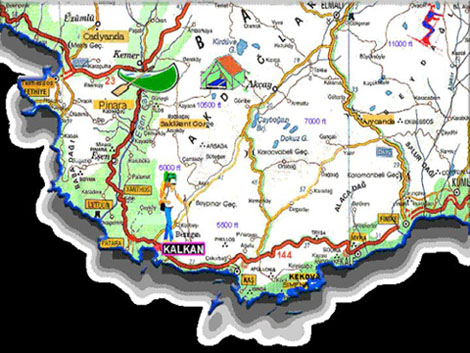
Tlos is one of the six principal cities of Lycia. Tlos once bore the title of "the very brilliant metropolis of the Lycian nation". It's one of the oldest and largest settlements of Lycia and was inhabited until the 19th century by Turks. Tlos lies on the east side of the Xanthos valley, and is dominated by its acropolis. This rocky outcrop slopes up from the plateau, but ends on the west, north and northeast in almost perpendicular cliffs. On its slope are several Lycian sarcophagi and many temple-type tombs are cut into the face of the acropolis hill. The influence of many cultures upon Tlos has resulted in an interesting collage of structures.

Acropolis Of Tlos
Patara Beach, an 18 kilometre-long strip of sand, bordered on its ends by mountains, should not be missed with its gorgeous landscape and great swimming. It is a national park and home to many birds, also the breeding ground of the endangered Loggerhead turtle, and is acknowledged as one of the best beaches in Turkey.
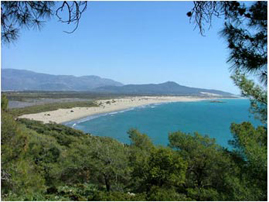
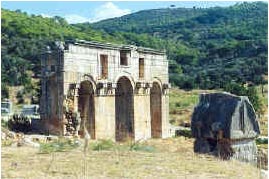
Kaputas, seven kilometres from Kalkan, along the most beautiful coastal road to Kaş is the most striking gorge. Plaques on the bridge commemorate the deaths of the workers killed during the road construction. Accessible by 120 very steep steps nestles the most perfect sandy shingle cove and beach. Close by, the Blue Cove is marked by a road sign, but simply look for a small gathering of yachts admiring the spectacle.
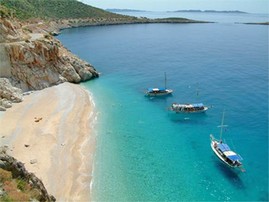
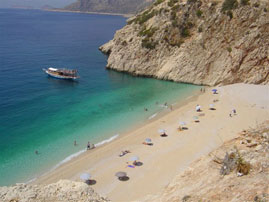
Kaş, a twenty seven kilometre
drive from Kalkan along the wonderful coastal road, is a pleasant working
town surrounded on three sides by the mountains. Life centres around the harbour
and town square with the usual tea houses, bars, restaurants and shops. Shops
on the main street serve the local community, however the charm still remains
and it is a pleasure to wander the cobbled streets, checking the shops selling
souvenirs, handicrafts, leather goods, clothing and silver and gold items.
Little is left of the ancient Antiphellus, which Kaş was named in the
fourth century BC, however the well-preserved and restored Lycian theatre
and the several tombs hewn out of the sheer mountain are illuminated at night.
In the town is the Lycian Sarcophagus, the Monument Tomb.
Local harbour boatmen will take you to fascinating bays and coves where the
swimming and diving are excellent in the clear water, or to admire the luxury
villas on the peninsula.
A popular boat tour from Kaş is to the Kalekoy, the sunken city, submerged
in the Mediterranean Sea, and Ucagis, an idyllic setting on a bay amid islands
and having a number of Lycian tombs and a sarcophagus the shape of a house.
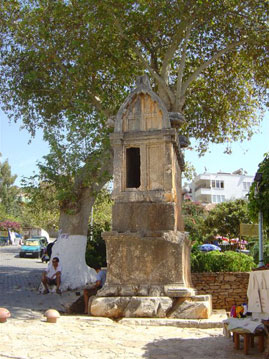
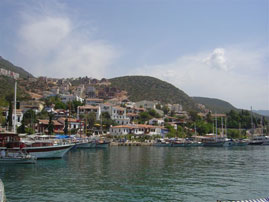

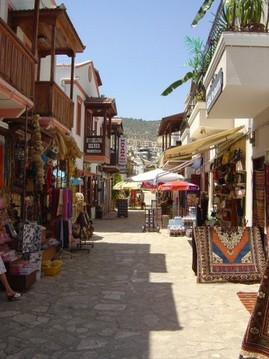
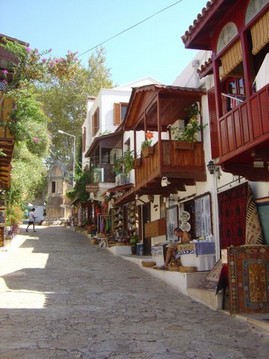
Saklikent Gorge, 18 kilometres long and cut deep into the Akdalglar mountains, is the deepest in Turkey. It is best visited on a late hot summers day, as the water is not quite as cold and deep, making the paddle more enjoyable. Have a beer, snack or freshly caught trout at the waterside raft restaurants and bars, decked out with Turkish rugs and cushions, and shaded by fig trees. An adventure for the young and old.
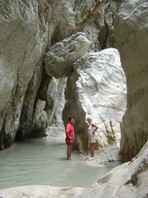
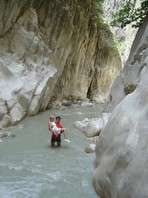

Xanthos, the ancient city, the grandest capital of Lycia, has some excellent ruins and is only a 30 minute drive from Kalkan. It stands atop an elevated area within the Xanthos valley with the Xanthos River closely under the city's west side. From this elevation one receives supreme views of the valley surrounded by the spectacular Taurus Mountains.
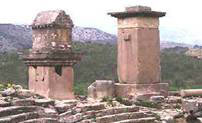
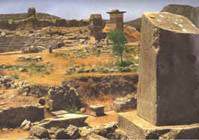
The Pillar Tombs & The Xanthian Obelisk
The history of Xanthos is quite violent. The Xanthosians twice
demonstrated the fierce independence of the Lycian people when they chose
to commit mass suicide rather than submit to invading forces. The Xanthosian
men set fire to their women, children, slaves and treasure upon the acropolis
before making their final doomed attack upon the invading Persians. Xanthos
was later repopulated, but the same gruesome story repeated itself in 42 BC
when Brutus attacked the city during the Roman civil wars, in order to recruit
troops and raise money. Brutus was shocked by the Lycians' suicide and offered
his soldiers a reward for each Xanthosian saved. Only 150 citizens were rescued.
Xanthos is about a 30 minute drive from Kalkan and well signposted. The site
of the Lycian capital city has been excavated by the French from 1954. It
contains a good example of an amphitheatre and mosaics. It is best to arrive
here about 4pm as the site is open until 7pm and most visitors have left.
It is cooler at this time. There is a shaded area to sit where you can buy
drinks, and use the loos. From here you can take approximately a 30 minute
drive to reach the mountain village of Islamlar where there are several good
restaurants which serve trout that is farmed in the area.
